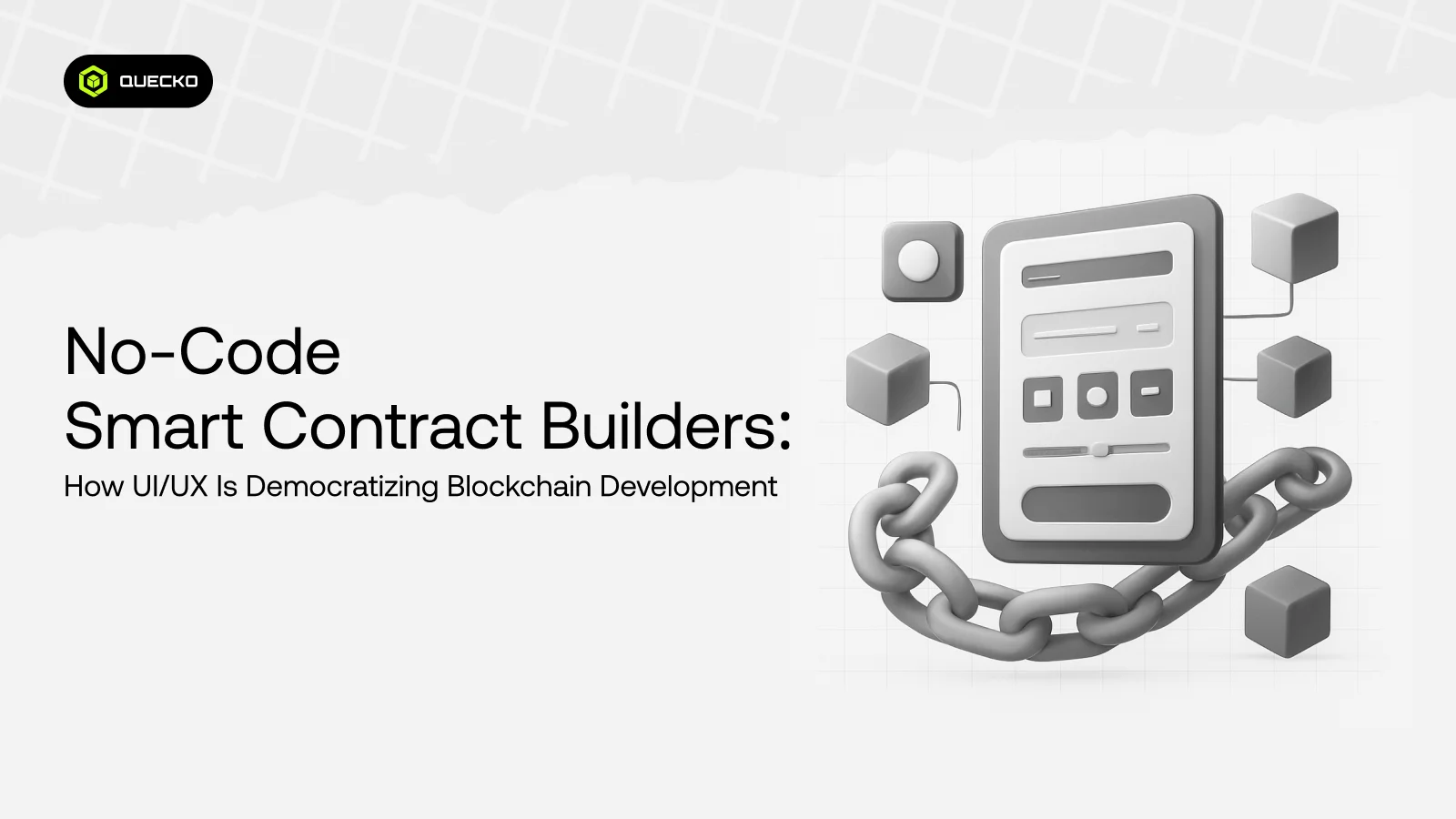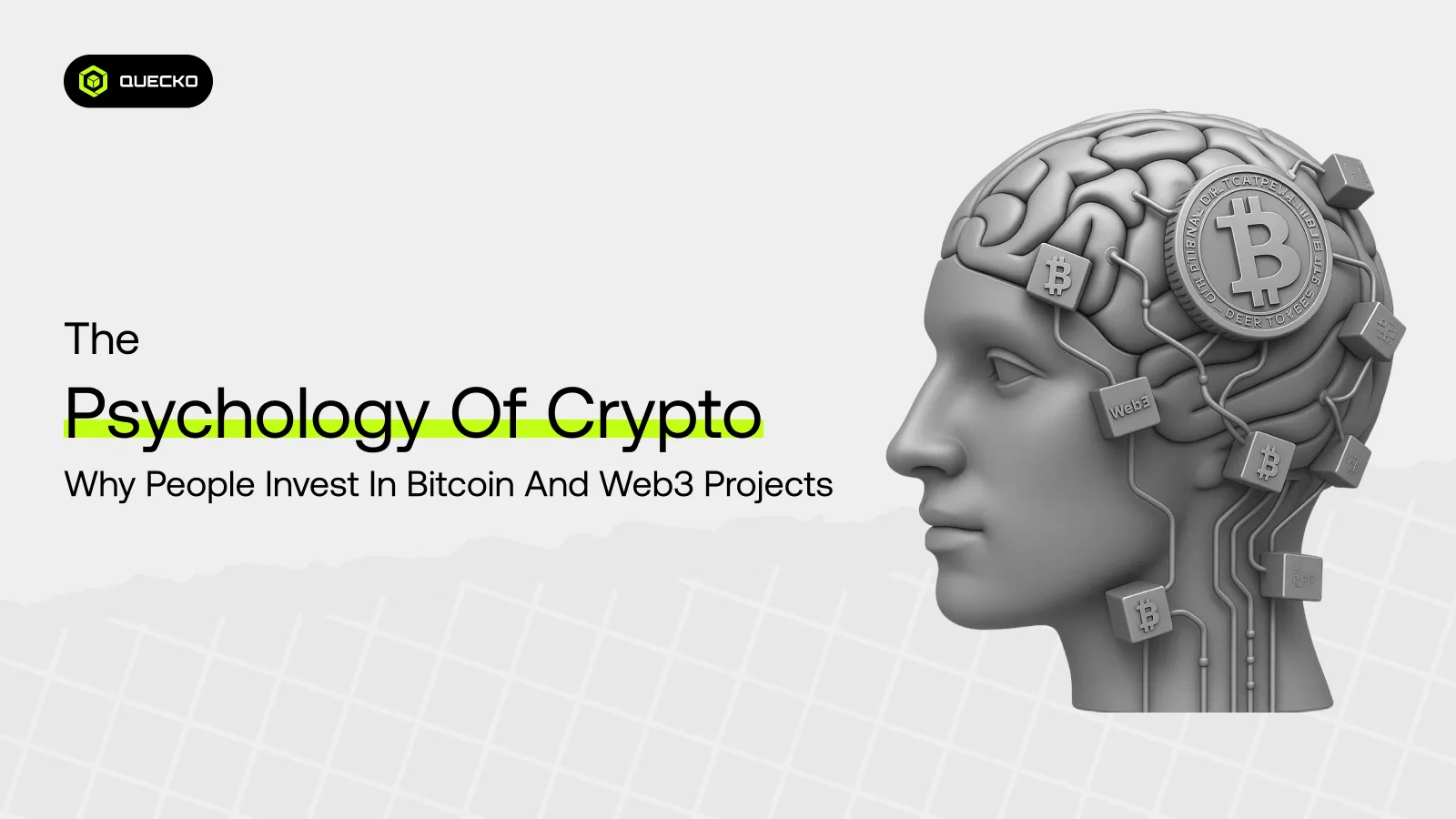No-Code Smart Contract Builders: How UI/UX is Democratizing Blockchain Development
No-code smart contract builders are democratizing blockchain, enabling anyone to create and deploy contracts easily with intuitive UI/UX.

In recent years, blockchain technology has revolutionized the landscape of digital transactions, decentralized finance, and data security. However, the complexity of traditional smart contracts development, requiring deep technical expertise in programming languages like Solidity and an understanding of blockchain architecture, has often limited participation to a niche community of developers and specialists. This barrier has hindered the broader adoption and innovation within the blockchain ecosystem, especially in areas like supply chain management, decentralized exchange, and NFT marketplaces.
Enter the era of no-code smart contract builders, innovative platforms designed with intuitive user interfaces (UI) and user experience (UX) principles that democratize blockchain development. These tools empower individuals, entrepreneurs, and organizations without technical backgrounds to create, deploy, and manage smart contracts with ease. By abstracting the complexities of coding and offering visual, drag-and-drop interfaces, no-code builders incorporate pre-designed smart contract templates and robust security features, making blockchain solutions more accessible and secure.
This evolution highlights a pivotal shift: the role of UI/UX design in making sophisticated technology accessible to a wider audience. As no-code platforms continue to mature, they are not only accelerating innovation but also fostering inclusivity, transparency, and collaboration within blockchain communities. From NFT marketplaces to decentralized exchanges and supply chain applications, these user-centered developments are redefining the landscape of blockchain development, enabling a new wave of creators and users to participate in shaping the decentralized future.
The Rise of No-Code Platforms in Blockchain
In recent years, the blockchain industry has experienced a transformative shift with the emergence of no-code platforms, democratizing access to blockchain development and innovation. No-code platforms are visual development environments that enable users, regardless of technical expertise, to create, deploy, and manage blockchain applications through intuitive drag-and-drop interfaces, pre-built modules, and simplified workflows.
This movement addresses the traditional barriers associated with blockchain development, such as complex coding requirements, steep learning curves, and the necessity for specialized programming skills. As a result, a broader spectrum of entrepreneurs, startups, artists, and enterprises can now participate in blockchain projects, tokenization, decentralized finance (DeFi), non-fungible tokens (NFTs), and decentralized autonomous organizations (DAOs).
The rise of these platforms has been fueled by the increasing demand for rapid prototyping, cost-efficiency, and accessibility. Leading no-code solutions like Bubble, CoinTool, and Moralis have integrated blockchain functionalities, allowing users to build decentralized apps (dApps), launch smart contracts, and create digital assets without writing a single line of code. This movement accelerates innovation cycles and lowers entry barriers, paving the way for a more inclusive and diverse blockchain ecosystem.
Furthermore, no-code platforms contribute to the standardization and security of blockchain development by providing validated templates and automated testing features. They also foster collaboration among multidisciplinary teams, combining technical and non-technical expertise to develop complex blockchain solutions. These platforms leverage visual interfaces and drag-and-drop features, enabling low-code development that simplifies creating smart contracts and other blockchain applications.
Overall, the rise of no-code platforms signifies a pivotal moment in blockchain technology, making it more accessible, scalable, and user-friendly, and is set to catalyze widespread adoption and creative experimentation in the decentralized digital landscape built on distributed ledger technology. Blockchain platforms are now more intuitive, enabling users to develop and deploy smart contracts and smart contract code with minimal coding effort through low-code development tools. This evolution bridges the gap from traditional Web 2 interfaces to advanced blockchain technology, empowering a broader range of users to participate in the evolving blockchain ecosystem.
Key Features of No-Code Smart Contract Builders
No-code smart contract builders enable users to create and deploy blockchain-based contracts without extensive programming knowledge. These platforms typically feature intuitive drag-and-drop interfaces, pre-built templates, and customizable modules that simplify the contract development process. They often include security audits, integration capabilities with various blockchain networks, and user-friendly dashboards for management and monitoring. These features empower entrepreneurs, startups, and non-technical users to harness blockchain technology efficiently and securely.
- Intuitive Drag-and-Drop Interface
No-code smart contract platforms typically feature user-friendly drag-and-drop interfaces, enabling users to design contract workflows visually. This eliminates the need for programming knowledge, making smart contract creation accessible to non-technical users. - Pre-Built Templates and Modules
These builders offer a library of customizable templates and modules tailored for common use cases such as token issuance, escrow agreements, voting systems, or NFT minting. Users can quickly assemble smart contracts by selecting and configuring these pre-made components, leveraging blockchain technology and distributed ledger technology. They are compatible with various Blockchain Platforms and support low-code development, enabling users to create complex solutions efficiently. Additionally, the integration of artificial intelligence can enhance contract functionality and automation. - Visual Workflow Configuration
Users can define the logic and flow of their smart contracts through visual tools, such as flowcharts or state diagrams. This simplifies the process of setting conditions, triggers, and outcomes without coding. Leveraging blockchain technology and blockchain platforms, users can visualize and customize their smart contracts easily. Additionally, integrating artificial intelligence can enhance the decision-making capabilities within smart contract code, making the development process more intuitive and efficient. - Automated Code Generation
Once the design is complete, the platform automatically generates the underlying smart contract code (often in Solidity, Vyper, or other blockchain-specific languages), leveraging blockchain technology and cryptographic systems. This process ensures the smart contracts adhere to best practices and reduces manual coding errors. Additionally, advanced features such as proof of stake consensus mechanisms and verifiable random functions can be integrated to enhance the security and functionality of the Blockchain Platforms, often utilizing artificial intelligence to optimize the development process. - Multi-Blockchain Compatibility
Many no-code builders support deployment across multiple blockchain networks like Ethereum, Binance Smart Chain, Polygon, or Solana. This flexibility allows users to choose the most appropriate blockchain for their needs without technical barriers. These platforms often facilitate the creation of smart contracts and leverage blockchain technology to enhance security and transparency. They integrate with various Blockchain Platforms and may incorporate artificial intelligence for smarter automation. Additionally, they support consensus mechanisms like proof of stake, and include features for identity and access management to control user permissions.
Ensuring compliance with AML regulations is also a key consideration in deploying these solutions.Many no-code builders support deployment across multiple blockchain networks like Ethereum, Binance Smart Chain, Polygon, or Solana. This flexibility allows users to choose the most appropriate blockchain for their needs without technical barriers. These platforms often facilitate the creation of smart contracts and leverage blockchain technology to enhance security and transparency. They integrate with various Blockchain Platforms and may incorporate artificial intelligence for smarter automation.
Additionally, they support consensus mechanisms like proof of stake, and include features for identity and access management to control user permissions. Ensuring compliance with AML regulations is also a key consideration in deploying these solutions.
- Built-in Testing and Simulation
Before deployment, users can utilize the “No-Code Smart Contract Builder” to simulate contract execution within the platform, leveraging blockchain technology and blockchain platforms like Hyperledger Fabric and Cosmos SDK to verify logic, identify bugs, and ensure correctness. Incorporating artificial intelligence tools further enhances testing efficiency. This process results in significant cost savings by reducing the risk of costly mistakes on live networks. - Secure Deployment Options
These platforms often include features for secure deployment, such as integration with wallets, key management, and audit logs, ensuring that contracts are deployed safely and transparently using blockchain technology. Examples include Hyperledger Fabric, Cosmos SDK, and No-Code Smart Contract Builder, which facilitate cost savings and streamlined development. Additionally, integration with cryptocurrency wallets enhances security and transparency during deployment. - Integration with External Data (Oracles)
Many no-code solutions facilitate integration with external data sources via oracles, enabling smart contracts to react to real-world events, such as price feeds, weather data, or other APIs, leveraging blockchain technology. For example, platforms built with Hyperledger Fabric or Cosmos SDK can incorporate these features, often through tools like a Cryptocurrency Wallet or a No-Code Smart Contract Builder. Additionally, Voice-Prompted Commands can enhance user interaction with smart contracts, making blockchain applications more accessible and intuitive. - User and Access Management
Built-in features for managing permissions, roles, and user authentication, such as those offered by Hyperledger Fabric and the Cosmos SDK, allow for controlled interactions with the contract, crucial for multi-party agreements or collaborative projects. Additionally, integrations like a cryptocurrency wallet, No-Code Smart Contract Builder, GainChain AI, and support for Custom Tokens enhance the flexibility and security of the system. - Version Control and Collaboration Tools
Platforms often include versioning, collaboration, and sharing features, enabling teams to work together on contract design, review changes, and maintain a history of modifications. For example, solutions like GainChain AI facilitate the management of digital contracts with integrated dispute resolution mechanisms. Additionally, tools such as Hyperledger Fabric support secure and scalable blockchain-based contract implementations, often incorporating qualified electronic signatures to ensure authenticity. Some platforms also offer No-Code Smart Contract Builder options, making it easier for users to create and deploy smart contracts without extensive coding knowledge. - Cost and Time Efficiency
By simplifying the creation process and reducing reliance on developers, no-code builders such as the “No-Code Smart Contract Builder” significantly cut down development time and costs, enabling faster deployment of blockchain-based solutions. This facilitates the development of digital contracts with integrated dispute resolution mechanisms, supported by human oracles and secured through qualified electronic signatures. - Compliance and Standardization Support
Some platforms provide compliance templates or guidelines to ensure smart contracts meet regulatory requirements relevant to specific industries or jurisdictions, incorporating features such as dispute resolution, no-code smart contract builder, digital contracts, human oracles, decentralized consensus, self-executing components, and digital signature tools.
In summary, no-code smart contract builders democratize blockchain development by providing accessible, visual, and secure tools for designing, testing, and deploying smart contracts. Their key features focus on ease of use, automation, flexibility across blockchains, and robust management tools, empowering a broader audience to leverage decentralized technologies without deep technical expertise.
Democratizing Blockchain Development through UI/UX
The concept of “Democratizing Blockchain Development through UI/UX” revolves around making blockchain technology accessible, understandable, and usable for a broader audience beyond specialized developers and technical experts. Traditionally, blockchain development has been confined to a niche of highly skilled programmers, owing to its complex architecture, cryptographic principles, and command-line interfaces. This barrier limits innovation and adoption among entrepreneurs, businesses, and everyday users.
To address these challenges, new tools like a “No-Code Smart Contract Builder” are emerging, enabling users to create digital contracts without extensive coding knowledge. These platforms often incorporate features like dispute resolution mechanisms and arbitration clauses to ensure fair and transparent processes. Additionally, advancements such as cryptographic sortition enhance the security and integrity of digital information stored on blockchains, especially in the off-chain world, where data is managed outside the main chain but still secured cryptographically.
Moreover, efforts are being made to support users in multiple languages, including the Italian language, to broaden accessibility. By simplifying interfaces and incorporating legal and technical safeguards, such as arbitration clauses, blockchain platforms aim to foster trust and usability, ultimately expanding participation in blockchain-based innovations and services.
Core Objectives:
The core objective of democratizing blockchain development through UI/UX is to make blockchain technology accessible and approachable for a broader audience, regardless of technical expertise. By focusing on intuitive interfaces and seamless user experiences, this initiative aims to lower the barriers traditionally associated with blockchain development, enabling developers, entrepreneurs, and everyday users to participate actively in decentralized ecosystems.
Simplifying complex processes such as smart contract creation, wallet management, and transaction monitoring through user-friendly design empowers more individuals to innovate, collaborate, and leverage blockchain’s potential without needing deep technical knowledge. Ultimately, this approach fosters inclusivity, accelerates adoption, and drives the widespread integration of blockchain solutions across diverse industries and communities.
1. Simplify Complex Processes:
By designing intuitive and user-friendly interfaces, complex blockchain operations, such as smart contract deployment, wallet management, transaction tracking, dispute resolution, and decentralized protocols, become approachable for non-technical users. This approach also facilitates the development of autonomous systems, Supply Chain Management Systems, Voting and Governance Systems, and Gaming and Metaverse Applications, making these advanced blockchain functionalities accessible to a broader audience.
- Enhance User Engagement & Trust:
Clear visualizations, guided workflows, and transparent transaction details, especially within private blockchains, Web 3 environments, or through tools like MetaMask Snaps, foster user confidence and understanding. Incorporating features such as dispute resolution, software oracles, and leveraging the Algorand infrastructure further encourages more active participation in blockchain ecosystems.
3.Lower Entry Barriers:
Streamlined onboarding processes, educational integrations, and visual tools, such as MetaMask Snaps, reduce the technical knowledge required, empowering a wider demographic to develop, deploy, and manage blockchain solutions, including private blockchains and dispute resolution mechanisms, within the Web 3 ecosystem, aligned with standards from European Standardization Organizations, and utilizing tokens like ATOM.
- Encourage Innovation & Community Growth:
Accessible development platforms that leverage technologies like private blockchain and Chainlink VRF inspire a diverse range of creators, artists, entrepreneurs, educators, to build on blockchain, fostering innovation, inclusivity, and ecosystem expansion. These platforms also support features such as dispute resolution and compliance with regulations like the European Union’s Artificial Intelligence Act, while integrating Web 3 principles and tokens like ATOM token to enhance usability and governance.
Strategies & Components:
The advent of no-code smart contract builders is transforming the blockchain landscape by making decentralized application development accessible to a broader audience. By emphasizing intuitive user interfaces and seamless user experiences, these platforms lower technical barriers and empower entrepreneurs, hobbyists, and non-developers to participate in blockchain innovation.
No-code smart contract builders are revolutionizing blockchain development by making it accessible to a broader audience through intuitive UI/UX design. These platforms employ user-friendly drag-and-drop interfaces, pre-built templates, and guided workflows that eliminate the need for extensive coding knowledge. Key components typically include visual contract editors, modular building blocks, real-time validation, and deployment tools, all integrated into seamless dashboards. By simplifying complex blockchain concepts and automating technical processes, these tools democratize access to smart contract creation, enabling entrepreneurs, developers, and even non-technical users to participate in blockchain innovation. This shift not only accelerates development cycles but also fosters a more inclusive ecosystem, empowering a diverse range of users to leverage blockchain technology without the traditional barriers of technical expertise.
This article explores the core strategies and essential components behind no-code smart contract builders, illustrating how their focus on UI/UX is democratizing blockchain development and fostering a more inclusive digital economy.
Intuitive Design & Visualizations:
- Use of simple dashboards, drag-and-drop builders, and interactive charts help users understand blockchain activities, such as asset transfers, tokenomics, governance votes, and activities within a private blockchain. These tools also facilitate monitoring dispute resolution processes, integrating features like Chainlink VRF for randomness, and ensuring compliance with regulations such as the European Union’s Artificial Intelligence Act and the eiDAS Regulation.
Abstraction of Technical Complexity:
- Abstract away cryptographic details, node management, and coding by providing high-level APIs, templates, and smart contract generators that require minimal coding knowledge, tailored for private blockchain implementations supporting dispute resolution in compliance with regulatory frameworks such as the European Union’s MiCA Regulation, European Standardisation Regulation, and Digital Services Act.
Guided Workflows & Tutorials:
- Step-by-step guides, contextual help, and onboarding wizards assist users in executing tasks like setting up wallets, deploying smart contracts, connecting to dApps securely, and navigating compliance requirements such as KYC procedures. These resources also support users in managing interactions within private blockchains, adhering to regulations like the MiCA Regulation and the European Standardisation Regulation, and understanding legal considerations from institutions like the Court of Biella, especially when operating within the European Union.
Cross-Platform Compatibility:
- Web-based platforms, mobile apps, and integrations ensure accessibility across devices, making blockchain tools available anytime, anywhere, including private blockchain solutions within the European Union.
Security & Trust Features:
- Incorporate transparent security indicators, audit reports, and user consent flows to build trust and ensure safe interactions within the platform.
Impact & Future Outlook:
The democratization of blockchain development through innovative UI/UX design is poised to revolutionize the way individuals and organizations engage with decentralized technologies. By simplifying complex processes and making blockchain tools accessible to non-technical users, intuitive interfaces empower a broader audience to participate in creating and managing blockchain applications. This shift not only accelerates adoption but also fosters a more inclusive ecosystem where innovation is driven by diverse contributors.
Looking ahead, advancements in user-centric design, combined with increasing mainstream awareness, are set to further democratize blockchain development, ultimately transforming it into a more accessible and widely adopted technology that can underpin various industries and societal functions.
Introduction
The evolution of blockchain technology has revolutionized industries by introducing decentralized, transparent, and secure systems. However, the complexity of blockchain development, encompassing smart contract coding, cryptographic principles, and network configurations, has historically limited access to developers with specialized expertise. To bridge this gap and foster widespread adoption, the focus has increasingly shifted toward democratizing blockchain development through intuitive UI/UX design.
Current Impact
The current landscape of blockchain technology is experiencing a transformative shift driven by the democratization of development through innovative UI/UX design. Traditionally, blockchain development has been complex and accessible primarily to technical experts, creating barriers for broader participation. However, advancements in user interface and user experience design are now making blockchain tools and platforms more intuitive and accessible to a diverse range of users, from entrepreneurs to hobbyists.
This democratization not only accelerates innovation and adoption but also fosters a more inclusive ecosystem where anyone can contribute to and benefit from blockchain technology. As a result, the gap between technical complexity and user accessibility is narrowing, paving the way for a more decentralized and engaged digital future.
- Lowering Barriers to Entry
User-friendly interfaces and visual tools have significantly reduced the technical knowledge required to engage with blockchain platforms. Non-developers, entrepreneurs, and small businesses can now create, deploy, and manage smart contracts without deep coding skills, accelerating innovation and adoption. - Accelerating Development Cycles
Rich graphical interfaces and drag-and-drop builders streamline the creation process, shortening development timelines. This enables rapid prototyping, testing, and deployment of blockchain solutions, fostering a more agile environment for startups and established organizations alike. - Enhancing Transparency and Trust
Well-designed UX fosters better understanding of blockchain operations among users, enhancing transparency. Clear visualizations of transactions, consensus mechanisms, and smart contract flows build trust and confidence, which are essential for mainstream acceptance. - Promoting Education and Awareness
Interactive tutorials, visual dashboards, and simplified workflows educate users about blockchain concepts, encouraging broader participation and literacy. This democratization cultivates a more informed user base and broadens the ecosystem.
Future Outlook
The future of blockchain technology hinges on making its development more accessible and user-friendly, emphasizing the democratization of blockchain development through innovative UI/UX design. As blockchain applications become increasingly integral to various industries, simplifying complex processes and lowering technical barriers will empower a broader range of developers, entrepreneurs, and users to participate actively.
The future of no-code smart contract builders is poised to revolutionize blockchain development by making it more accessible and user-friendly through enhanced UI/UX design. As these platforms evolve, they are increasingly empowering individuals without technical expertise to create, deploy, and manage smart contracts seamlessly. Intuitive interfaces, drag-and-drop functionalities, and guided workflows are democratizing access to blockchain technology, fostering innovation across diverse sectors such as finance, supply chain, and decentralized applications. This shift not only accelerates adoption but also encourages a broader community of developers, entrepreneurs, and enthusiasts to participate in shaping the decentralized future, ultimately bridging the gap between complex blockchain protocols and everyday users.
By focusing on intuitive interfaces and seamless experiences, the industry can foster widespread adoption, stimulate innovation, and unlock the full potential of blockchain solutions for diverse audiences worldwide.
- AI-Driven Customization and Automation
Integrating artificial intelligence into UI/UX will enable personalized development environments, intelligent suggestions, and automated code generation, further reducing technical barriers and increasing productivity. - No-Code and Low-Code Platforms Expansion
The rise of no-code/low-code solutions tailored for blockchain will empower even non-technical users to craft complex decentralized applications (dApps), fostering innovation at an unprecedented scale. - Cross-Platform and Interoperable Interfaces
Future UI/UX designs will prioritize seamless integration across multiple blockchains and devices, enabling users to manage diverse assets and applications from unified interfaces, promoting interoperability. - Enhanced Security and User Protections
Simplified yet secure interfaces will incorporate best practices for safeguarding private keys and preventing errors, making blockchain participation safer for newcomers. - Inclusive and Accessible Design
Efforts will increasingly focus on making blockchain tools accessible to diverse populations, including those with disabilities, different languages, and varying levels of digital literacy, ensuring equitable participation. - Decentralized Identity and Self-Sovereign Data Management
Future UI/UX will facilitate intuitive control over personal data and identities, aligning with the principles of decentralization and user sovereignty.
In summary, the democratization of blockchain development through improved UI/UX design heralds a future where innovation is limited only by imagination rather than technical expertise. As interfaces become more intuitive, accessible, and intelligent, blockchain technology is poised to permeate everyday life, empowering individuals, fostering transparency, and unlocking new economic models.
Continued advancements in this domain will be crucial for realizing blockchain’s full potential as a transformative force across industries and societies.
How UI/UX is Driving This Democratization
In recent years, the fields of User Interface (UI) and User Experience (UX) design have played a pivotal role in transforming complex technologies into accessible, user-friendly tools that empower a broader audience. This democratization of technology, making advanced digital resources available to people regardless of their technical expertise or socioeconomic background, is fundamentally driven by thoughtful UI/UX design.
Lowering Barriers to Entry:
Intuitive UI/UX design simplifies interactions, enabling users with minimal technical skills to navigate sophisticated platforms seamlessly. Features such as clear navigation menus, straightforward onboarding processes, and contextual guidance reduce the intimidation factor and foster confidence among new users.
Universal Accessibility:
Modern UI/UX practices emphasize accessibility, ensuring that digital products are usable by individuals with disabilities and varying abilities. Incorporating features like screen reader compatibility, adjustable font sizes, high-contrast modes, and keyboard navigation broadens participation, effectively democratizing access.
Personalization and Inclusivity:
Great UX design caters to diverse user needs through personalization options, localized content, and culturally sensitive interfaces. This inclusivity helps bridge gaps caused by language barriers, cultural differences, or differing levels of digital literacy.
Streamlining User Journeys:
Effective UI/UX minimizes cognitive load by organizing information logically and reducing unnecessary steps. This efficiency allows users to achieve their goals quickly, encouraging widespread adoption of tools that might otherwise seem complex or overwhelming.
Empowering Creativity and Collaboration:
User-centered design fosters environments where users can experiment, create, and collaborate without technical barriers. Platforms with intuitive interfaces enable amateur creators, small businesses, and community groups to leverage powerful tools, thus democratizing innovation and participation.
Feedback-Driven Iteration:
UI/UX practitioners actively incorporate user feedback to refine interfaces continually. This iterative approach ensures that products evolve to meet real-world needs, making technology more relevant and accessible to a broader demographic.
Impact on Industries and Society:
As a result of these design principles, industries like education, healthcare, finance, and social networking have become more inclusive. Technologies such as mobile apps, SaaS platforms, and social media are now accessible to millions worldwide, promoting economic participation, knowledge sharing, and social engagement.
In short, in essence, UI/UX design acts as the bridge between complex technological possibilities and everyday users. By focusing on simplicity, accessibility, and inclusivity, UI/UX is instrumental in driving the democratization of technology,ensuring that innovation benefits all layers of society rather than a select few.
Challenges & the Road Ahead
As blockchain technology continues to revolutionize industries, from finance and supply chain to gaming and decentralized applications, there is an increasing demand for accessible tools that democratize its development. No-code smart contract builders are emerging as pivotal solutions, enabling users without extensive programming expertise to create, deploy, and manage blockchain contracts through intuitive visual interfaces.
However, despite their growing popularity and potential, these platforms face significant challenges on their path forward.
Current Landscape of No-Code Smart Contract Builders
No-code platforms like Bubble, Remix IDE with simplified interfaces, and specialized tools such as Remix, Moralis, or thirdweb aim to lower the barriers to blockchain development. They offer drag-and-drop components, guided workflows, and pre-built templates, making it easier for entrepreneurs, artists, and small businesses to leverage blockchain’s benefits without deep technical knowledge.
Key Challenges Facing No-Code Blockchain Development
- Complexity of Blockchain Concepts
-
-
- Abstracting Technical Nuances: Blockchain involves complex concepts like consensus mechanisms, cryptography, token standards, and security best practices. Simplifying these without losing essential functionality is a delicate balance.
- Ensuring Correctness: Users may inadvertently create insecure or non-compliant contracts that could lead to vulnerabilities or legal issues.
-
- Security Concerns
-
-
- Vulnerabilities & Exploits: Smart contracts are immutable once deployed, making security paramount. No-code builders must incorporate robust validation, audits, and testing tools to prevent exploits.
- User Trust: Ensuring that non-technical users trust the platform’s security measures is crucial for widespread adoption.
-
- Limited Flexibility & Customization
-
-
- Trade-off Between Simplicity & Functionality: While no-code tools excel in ease of use, they often lack the flexibility needed for complex or highly specialized contracts.
- Ecosystem Compatibility: Integrating with various blockchain networks, standards, and third-party services can be challenging within a no-code environment.
-
- Scalability & Performance
-
-
- Handling Complex Contracts: As contracts grow in complexity, maintaining performance and responsiveness in a visual environment becomes challenging.
- Deployment & Cost Management: Optimizing for gas efficiency and deployment costs remains a concern, especially for users unfamiliar with blockchain economics.
-
- Regulatory & Legal Considerations
-
-
- Compliance: Users deploying contracts for financial or legal purposes must navigate regulatory landscapes, which no-code platforms may not fully address.
- Liability & Responsibility: Clarifying the platform’s role in contract security and legal compliance is essential.
-
- User Experience (UX) & Education
-
- Intuitive Design vs. Technical Detail: Striking the right balance between simplicity and enough technical detail to empower informed decision-making.
- Onboarding & Support: Providing comprehensive tutorials, documentation, and support to guide new users.
The Road Ahead: Opportunities & Strategic Directions
Despite these challenges, the future of no-code smart contract builders is promising. Key trends and strategic focus areas include:
- Enhanced Security & Auditing Tools
-
-
- Integration of automated code analysis, vulnerability scanning, and simulation environments to ensure contract safety before deployment.
- Partnerships with security firms for third-party audits within the platform.
-
- Advanced UI/UX Design
-
-
- Developing more intuitive, guided workflows that explain underlying blockchain concepts.
- Customizable templates for various use cases, from NFTs to DeFi protocols.
-
- Interoperability & Ecosystem Expansion
-
-
- Supporting multiple blockchain networks (Ethereum, Solana, Binance Smart Chain, etc.).
- Facilitating integration with off-chain data sources and existing enterprise systems.
-
- Educational Integration & Community Building
-
-
- Embedding educational resources within platforms to increase user literacy.
- Creating community forums for shared learning, templates, and best practices.
-
- Hybrid Approaches
-
-
- Combining no-code interfaces with low-code or code-assisted options for advanced customization.
- Allowing users to transition from no-code to traditional development as needed.
-
- Regulatory & Legal Support
-
- Embedding compliance checks and legal templates to streamline deployment in regulated sectors.
- Offering guidance on legal implications and best practices.
No-code smart contract builders are transforming blockchain from an expert-only domain into an accessible, user-friendly ecosystem. By prioritizing user-centered UI/UX design, security, and flexibility, these platforms are empowering a broader range of innovators, artists, entrepreneurs, and small businesses,to participate in the decentralized revolution. As technological advancements address existing challenges, and as community and regulatory frameworks mature, the road ahead promises a more inclusive, secure, and dynamic blockchain landscape driven by democratized development tools.
Final Thoughts
In conclusion, no-code smart contract builders are revolutionizing the landscape of blockchain development by significantly lowering the barriers to entry through intuitive UI/UX design. By abstracting complex coding processes and providing user-friendly interfaces, these platforms empower individuals without technical backgrounds to participate in creating, deploying, and managing smart contracts.
This democratization not only accelerates innovation and diversification within the blockchain ecosystem but also fosters greater inclusivity and community engagement. As these tools continue to evolve, with enhanced security features, integration capabilities, and educational resources, they are poised to catalyze a broader adoption of blockchain technology across various industries.
Ultimately, the synergy between sophisticated blockchain functionalities and accessible design heralds a new era where the power to develop and leverage smart contracts is accessible to all, driving forward a more open, collaborative, and innovative decentralized future.
The emergence of no-code smart contract builders marks a pivotal shift in the blockchain landscape, emphasizing accessibility, user experience, and democratization. By lowering technical barriers, intuitive UI/UX designs empower a broader audience—entrepreneurs, developers, and even non-technical enthusiasts—to participate in blockchain innovation. This democratization fosters increased experimentation, innovation, and adoption, accelerating blockchain’s integration into everyday applications. However, as these tools become more prevalent, it remains crucial to maintain rigorous security standards and educate users about best practices. Ultimately, the convergence of streamlined interfaces and robust security will define the future of accessible blockchain development, making decentralized technologies more inclusive and impactful for all.
Date
4 months agoShare on
Related Blogs

The Convergence of AI and Blockchain Development
2 days ago

How to Create an Altcoin
5 days ago

From Hashes to Lattices: The Future of Blockchain Security
6 days ago

The Psychology of Crypto: Why People Invest in Bitcoin and Web3 Projects
17 days ago







